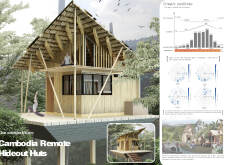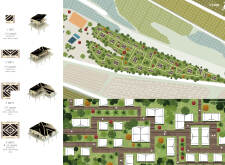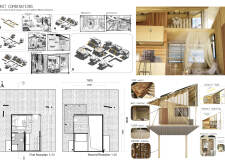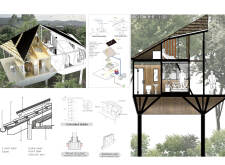5 key facts about this project
The Cambodia Remote Hideout Huts project is located in the vibrant landscapes of Cambodia, designed to provide a relaxing escape while encouraging social connections and interaction with nature. The overall concept focuses on modular units that can accommodate different group sizes, allowing for both privacy and communal experiences. The design aims to address the local climate and the surrounding environment by enhancing the visitor experience and promoting an appreciation for the natural world.
Climatic Context
The project considers the region's hot and humid climate, characterized by air pressures between 1008hPa and 1013hPa, along with humidity levels ranging from 67% to 84%. To ensure the comfort of visitors, the layout emphasizes improved indoor ventilation and suggests elevating structures off the ground. This design choice promotes better airflow and helps reduce humidity's effects during the warmer months, creating a more pleasant atmosphere inside the huts.
Adaptive Unit Design
Various modular units are planned, catering to different visitor needs. Some units accommodate 1-2 people, while others are designed for 2-4, 5-7, or even 8-12 people. This flexibility supports individuals, couples, families, and larger groups, fostering an inviting environment. The ability to adjust the layout based on the number of guests allows occupants to enjoy both solitude and shared experiences amid nature.
Material Selection
Materials chosen for construction reflect a commitment to sustainability and the availability of local resources. Roofs are proposed to be made from wood, while bamboo will be used for walls and structural supports. Wooden flooring will enhance the interiors. This selection resonates with traditional Cambodian building practices and lessens environmental impact while providing benefits like temperature regulation and visual warmth.
Environmental Integration
The design intentionally connects the huts with the surrounding landscape, incorporating elements like viewing platforms and bird feeders. These features invite visitors to interact with nature, encouraging them to appreciate local wildlife. By emphasizing this relationship, the project enhances the user experience and underscores the connection between built structures and their natural surroundings.






















































